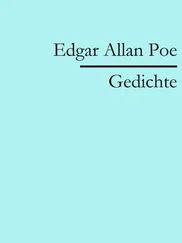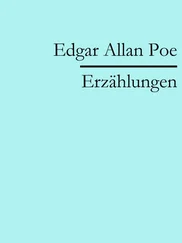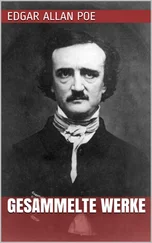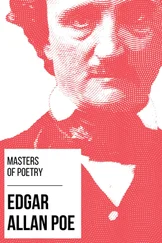Current PEM fuel cell stacks are small enough to fit beneath a vehicle's floor next to the storage batteries and currently can deliver up to 125 kW to an electric motor. Studies indicate that the best opportunities for fuel cell adoption are in the commercial vehicle market, i.e., trucks and off‐highway applications. Since there is presently no hydrogen fuel storage infrastructure, one option is on‐board reforming of methanol fuel to hydrogen and  . The reforming efficiency is about 60%, so coupled with a fuel cell efficiency of 70%, and a motor efficiency of 90%, the overall fuel cell engine efficiency is of the order of 40%, about the same as a high‐efficiency internal combustion engine.
. The reforming efficiency is about 60%, so coupled with a fuel cell efficiency of 70%, and a motor efficiency of 90%, the overall fuel cell engine efficiency is of the order of 40%, about the same as a high‐efficiency internal combustion engine.
Gas turbine engines compete with internal combustion engines on the other end of the power spectrum, at powers greater than about 500 kW. The advantages offered depend on the application. Factors to consider are the efficiency and power per unit weight. A gas turbine consists basically of a compressor‐burner‐turbine combination that provides a supply of hot, high‐pressure gas. This may then be expanded through a nozzle (turbojet), through a turbine, to drive a fan, and then through a nozzle (turbofan), through a turbine, to drive a propeller (turboprop), or through a turbine to spin a shaft in a stationary or vehicular application.
One advantage a gas turbine engine offers to the designer is that the hardware responsible for compression, combustion, and expansion are three different devices, whereas in a piston engine all these processes are done within the cylinder. The hardware for each process in a gas turbine engine can then be optimized separately; whereas in a piston engine compromises must be made with any given process, since the hardware is expected to do three tasks. However, it should be pointed out that turbochargers give the designer of conventional internal combustion engines some new degrees of freedom toward optimization.
With temperature limits imposed by materials, the reciprocating engine can have a greater peak cycle temperature than the gas turbine engine. In an internal combustion engine, the gases at any position within the engine vary periodically from hot to cold. Thus the average temperature during the heat transfer to the walls is neither very hot nor cold. On the other hand, the gas temperature at any position in the gas turbine is steady, and the turbine inlet temperature is always very hot, thus tending to heat material at this point to a greater temperature than anywhere in a piston engine.
The thermal efficiency of a gas turbine engine is highly dependent on the adiabatic efficiency of its components, which in turn is highly dependent on their size and their operating conditions. Large gas turbines tend to be more efficient than small gas turbines. That airliners are larger than automobiles is one reason gas turbines have displaced piston engines in airliners, but not in automobiles. Likewise gas turbines are beginning to penetrate the marine industry, though not as rapidly, as power per unit weight is not as important with ships as with airplanes.
Another factor favoring the use of gas turbines in airliners (and ships) is that the time the engine spends operating at part or full load is small compared to the time the engine spends cruising, therefore the engine can be optimized for maximum efficiency at cruise. It is a minor concern that at part load or at take‐off conditions the engine's efficiency is compromised. Automobiles, on the other hand, are operated over a wide range of load and speed so a good efficiency at all conditions is better than a slightly better efficiency at the most probable operating condition and a poorer efficiency at all the rest.
Steam‐ or vapor‐cycle engines are much less efficient than internal combustion engines, since their peak temperatures are about 800 K, much lower than the peak temperatures (  of an internal combustion engine. They are used today almost totally in stationary applications and where the energy source precludes the use of internal combustion engines. Such energy sources include coal, waste feed stocks, nuclear, solar, and waste heat in the exhaust gas of combustion devices including internal combustion engines.
of an internal combustion engine. They are used today almost totally in stationary applications and where the energy source precludes the use of internal combustion engines. Such energy sources include coal, waste feed stocks, nuclear, solar, and waste heat in the exhaust gas of combustion devices including internal combustion engines.
In some applications, engine emission characteristics might be a controlling factor. In the 1970s, in fact, a great deal of development work was done toward producing an automotive steam engine when it was not known whether the emissions from the internal combustion engine could be reduced enough to meet the standards dictated by concern for public health. However, the development of catalytic converters, as discussed in Chapter 09, made it possible for the internal combustion engine to meet emission standards at that time, and remain a dominant prime mover technology.
The references of this introductory chapter contain a listing of both historical and current books that will provide additional information about internal combustion engine design, analysis and performance. These books will give the reader a deeper appreciation of how much the technology of internal combustion engines has advanced in the last century. In chronological order, these books are: Clerk (1910), Ricardo (1941), Benson and Whitehouse (1979), Cummins (1989), Arcoumanis (1988), Lumley (1999), Pulkrabek (2003), Shi et al. (2011), Stone (2012), and Heywood (2018).
1 Arcoumanis, C. (1988), Internal Combustion Engines, Academic Press, London, England.
2 Benson, R. and Whitehouse, N., (1979), Internal Combustion Engines, Pergamon Press, New York.
3 Clerk, D. (1910), The Gas, Petrol, and Oil Engine, Longmans, Green, and Co., London, England.
4 Cummins, L. (1989), Internal Fire, Society of Automotive Engineers, Warrendale, Pennsylvania.
5 Heywood, J. B. (2018), Internal Combustion Engine Fundamentals, McGraw‐Hill, New York.
6 Lumley, J. (1999), Engines: An Introduction, Cambridge University Press, Cambridge, England.
7 Obert, E. (1950), Internal Combustion Engines, International Textbook Co., Scranton, PA.
8 Pulkrabek, W. (2003), Engineering Fundamentals of the Internal Combustion Engine, Prentice Hall, New York.
9 Ricardo, H. R. (1941), The High Speed Internal Combustion Engine, Interscience Publishers, New York.
10 Shi, Y., H. Ge, and R. Reitz (2011), Computational Optimization of Internal Combustion Engines, Springer‐Verlag, London, England.
11 Stone, R. (2012), Introduction to Internal Combustion Engines, SAE International, Warrendale, PA.
12 Taylor, C. (1985), The Internal Combustion Engine in Theory and Practice, Vols. 1 and 2, MIT Press, Cambridge, MA.
1 1.1 Compute the mean piston speed, bmep (bar), torque (Nm), and the power per piston area for the engines listed in Table 1.2. Table 1.2Engine Data for Homework ProblemsBoreStrokeSpeedPowerEngine(mm)(mm)Cylinders(rpm)(kW)Marine13612712 26001118Truck108 95 8 6400 447Airplane 86 57 810500 522
2 1.2 A six‐cylinder, two‐stroke airplane engine with a compression ratio = 9 produces a torque of 1100 Nm at a speed of 2100 rpm. It has a bore of 123 mm and a stroke of 127 mm. (a) What is the displacement volume and the clearance volume of a cylinder? (b) What is the engine bmep, brake power, and mean piston speed?
3 1.3 A four‐cylinder, 2.5 L four‐stroke spark ignited engine is mounted on a dyno and operated at a speed of = 3000 rpm. The engine has a compression ratio of 10:1 and mass air–fuel ratio of 15:1. The inlet air manifold conditions are 80 kPa and 313 K. The engine produces a torque of 160 Nm and has a volumetric efficiency of 0.82. (a) What is the brake power (kW)? (b) What is the brake specific fuel consumption bsfc (g/kWh)? (c) What is the brake work (kJ) per cylinder per revolution?
Читать дальше

 . The reforming efficiency is about 60%, so coupled with a fuel cell efficiency of 70%, and a motor efficiency of 90%, the overall fuel cell engine efficiency is of the order of 40%, about the same as a high‐efficiency internal combustion engine.
. The reforming efficiency is about 60%, so coupled with a fuel cell efficiency of 70%, and a motor efficiency of 90%, the overall fuel cell engine efficiency is of the order of 40%, about the same as a high‐efficiency internal combustion engine. of an internal combustion engine. They are used today almost totally in stationary applications and where the energy source precludes the use of internal combustion engines. Such energy sources include coal, waste feed stocks, nuclear, solar, and waste heat in the exhaust gas of combustion devices including internal combustion engines.
of an internal combustion engine. They are used today almost totally in stationary applications and where the energy source precludes the use of internal combustion engines. Such energy sources include coal, waste feed stocks, nuclear, solar, and waste heat in the exhaust gas of combustion devices including internal combustion engines.










